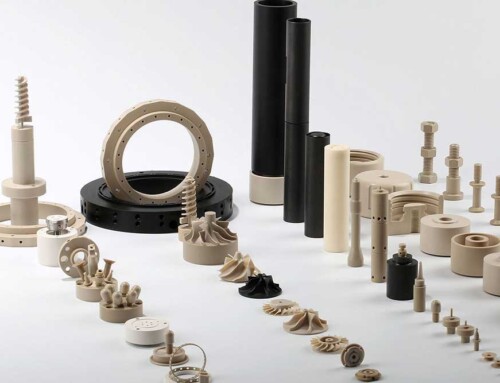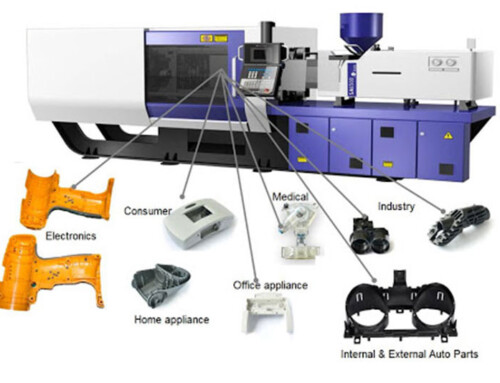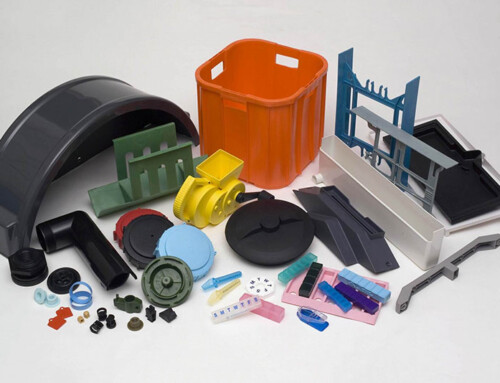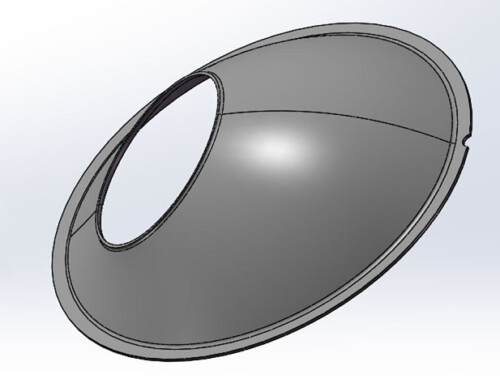What type of materials is mostly used in injection molding? How do I choose the suitable plastic injection molding material? It is very important to choose the right plastic material for your injection molding plastic parts project. There are multiple factors you should have to consider: application, function, flexibility, durability, each plastic material has its own characteristics, your choice will affect your part with corresponding performance.
Even the shrinkage of the material needs to be considered. If the injection molded part is molded from one material in the initial trial, the replacement of the material in subsequent production may affect the size of the part. That’s because different materials may have different rates of shrinkage.
1. Injection Moulding Raw Material List
Holly summary the common plastic material in the following table, you could compare a wide variety of plastic injection molding materials.
The table contains the material grade, characteristics, strength, gravity, shrinkage ratio (if the plastic material adds glass fiber, the gravity and shrinkage ratio will be changed), and corresponding material data sheet (you could view or download the PDF).
| Material | Material Grade | Characteristics | Specification |
| ABS | PA-746 PA-765 Lustran 433 RTP 605 (30% GF) |
High strength and impact toughness, chemical stability and insulation, good abrasion and heat resistance, mechanical processing | Tensile Strength: 5,000-12,000 psi Tensile Strength: 34.5-82.7 MPa Impact Strength: 3-7.5 ft-lb Impact Strength: 4.1-10.2 Joules Heat Deflection: 140-200 °F Heat Deflection: 60-93.3 ℃ Gravity: 1.05 g/cm Shrinkage Ratio: 0.5% |
| ABS/PC | Bayblend FR 110 Bayblend FR 3010 Cycoloy C6200 |
It combines the formability of ABS material with the mechanical properties of PC, such as impact strength, temperature resistance, and UV resistance | Tensile Strength: 6,400-18,000 psi Tensile Strength: 44.1-124.1 MPa Impact Strength: 8-12 ft-lb Impact Strength: 10.8-16.3 Joules Heat Deflection: 140-210 °F Heat Deflection: 60-98.9 ℃ Gravity: 1.15 g/cm Shrinkage Ratio: 0.5% |
| HDPE | Unipol DMDA 8007 Dow DMDA 8907 |
Good cold resistance, low friction coefficient, small water absorption, good electrical insulation, and radiation resistance, mechanical strength is not high, low thermal deformation temperature. | Tensile Strength: 2,900-4,500 psi Tensile Strength: 20-31 MPa Impact Strength: 80 ft-lb Impact Strength 108.5 Joules Heat Deflection: 130-250 °F Heat Deflection: 54.4-121.1 ℃ Gravity: 0.98 g/cm Shrinkage Ratio: 3% |
| LCP | Vectra E130 (30% GF) | Good mechanical properties, dimensional stability, optical properties, electrical properties, chemical resistance, flame retardant, good processability | Tensile Strength: 12,000-32,000 psi Tensile Strength: 82.7-220.6 MPa Impact Strength: 10 ft-lb Impact Strength: 13.6 Joules Heat Deflection: 525 °F Heat Deflection: 273.9 ℃ Gravity: 1.7 g/cm Shrinkage Ratio: 0.02% |
| LDPE | Dow LDPE 722 | Good flexibility, extensibility, electrical insulation, transparency, easy to process and some air permeability | Tensile Strength: 1,200-4,000 psi Tensile Strength: 8.3-27.6 MPa Impact Strength: 130 ft-lb Impact Strength: 176.2 Joules Heat Deflection: 130-190 °F Heat Deflection: 54.4-87.8 ℃ Gravity: 0.93 g/cm Shrinkage Ratio: 3% |
| LLDPE | Dowlex 2517 | Good environmental stress cracking resistance, impact strength, tear strength | Tensile Strength: 1400 psi Tensile Strength: 9.7 MPa Impact Strength: 190 ft-lb Impact Strength 257.6 Joules Heat Deflection: 190 °F Heat Deflection: 87.8 ℃ Gravity: 0.92 g/cm Shrinkage Ratio: 3% |
| PA (Nylon) | PA6 Akulon® F136-C PA6-GF30 Ultramid B3EG6 Vydyne R533H (33% GF Nylon 66) |
good strength, toughness, abrasion resistance, corrosion resistance, vibration absorption, self-lubrication, formability, non-toxic, tasteless. | Tensile Strength: 6,000-29,000 psi Tensile Strength: 9.7 MPa Impact Strength: 2-8 ft-lb Impact Strength: 2.7-10.8 Joules Heat Deflection: 180-350 °F Heat Deflection: 82.2-176.7 ℃ Gravity: 1.15g/cm Shrinkage Ratio: 0.8% |
| PBT | Ultradur-B4300G6-HR-Black Valox 357 Valox 420SEO (30% GF) |
Good heat resistance, flame retardant, electrical insulation, processing performance | Tensile Strength:6,000-17,500 psi Tensile Strength: 41.4-120.7 MPa Impact Strength: 1-3 ft-lb Impact Strength: 1.4-4.1 Joules Heat Deflection: 200-420 °F Heat Deflection: 93.3-215.6 ℃ Gravity: 1.38g/cm Shrinkage Ratio: 1.5% |
| Polycarbonate (PC) | Lexan 940 Hylex P1025L Makrolon 2407 |
High tensile and bending strength, good impact toughness and creep resistance, high heat resistance, cold resistance, and dimensional stability | Tensile Strength:9,000-23,000 psi Tensile Strength: 62.1-158.6 MPa Impact Strength: 2-18 ft-lb Impact Strength: 2.7-24.4 Joules Heat Deflection: 150-300 °F Heat Deflection: 65.6-148.9 ℃ Gravity: 1.2 g/cm Shrinkage Ratio: 0.6 % |
| PC/PBT | Xenoy 6620 | Higher surface hardness, higher rigidity, and toughness, also has a higher resistance to high-temperature shape, also has a higher resistance to stress cracking ability | Tensile Strength:6300 psi Tensile Strength: 43.4 MPa Impact Strength: 17 ft-lb Impact Strength: 23 Joules Heat Deflection: 210 °F Heat Deflection: 98.9 ℃ Gravity: 1.2 g/cm Shrinkage Ratio: 0.6 % |
| PEEK | Victrex 450G | High-temperature resistance, excellent mechanical properties, good self-lubrication, chemical corrosion resistance, flame retardant, wear resistance, radiation resistance, super mechanical properties | Tensile Strength: 13,000-30,000 psi Tensile Strength: 89.6-206.9 MPa Impact Strength: 3.5-4.5 ft-lb Impact Strength: 4.7-6.1 Joules Heat Deflection: 300-625 °F Heat Deflection: 148.9-329.4 ℃ Gravity: 1.32 g/cm Shrinkage Ratio: 1.1 % |
| PEI (Ultem) | Ultem 2200 (20% GF) | Good flame retardant, chemical resistance, and electrical insulation | Tensile Strength: 14,000-28,000 psi Tensile Strength: 96.5-193.1 MPa Impact Strength: 1-2 ft-lb Impact Strength: 1.4-2.7 Joules Heat Deflection: 350-420 °F Heat Deflection: 176.7-215.6 ℃ Gravity: 1.27 g/cm Shrinkage Ratio: 0.6 % |
| PET | Rynite 530 (30% GF) | Excellent physical and mechanical properties, long-term service temperature up to 120℃, good electrical insulation, creep resistance, fatigue resistance, friction resistance, dimensional stability | Tensile Strength: 7,000-23,000 psi Tensile Strength: 48.3-158.6 MPa Impact Strength: 0.5-8 ft-lb Impact Strength: 0.7-10.8 Joules Heat Deflection: 250-470 °F Heat Deflection: 121.1-243.3 ℃ Gravity: 1.38 g/cm Shrinkage Ratio: 0.4 % |
| PETG | Eastar 6763 | Outstanding toughness and high impact strength, with a wide range of processing, high mechanical strength, and excellent flexibility | Tensile Strength: 7250 psi Tensile Strength: 50 MPa Impact Strength: 3 ft-lb Impact Strength: 4.1 Joules Heat Deflection: 185 °F Heat Deflection: 85 ℃ Gravity: 1.27 g/cm Shrinkage Ratio: 0.4 % |
| PMMA (Acrylic) | Plexiglas V825 | The light transmittance is 92%, the relative density is half of the glass, the strength and toughness are high, the ultraviolet radiation resistance, the anti-aging atmosphere, easy to form | Tensile Strength: 2,800-13,000 psi Tensile Strength: 19.3-89.6 MPa Impact Strength: 0.25-1 ft-lb Impact Strength: 0.3-1.4 Joules Heat Deflection: 180-215 °F Heat Deflection: 82.2-101.7 ℃ Gravity: 1.18 g/cm Shrinkage Ratio: 0.4 % |
| POM (Acetal/Delrin) | Celcon M90 Acetal 20% GF (Delrin 570) |
Good strength, high stiffness, elasticity, wear resistance, electrical insulation | Tensile Strength: 6,000-22,000 psi Tensile Strength: 41.4-151.7 MPa Impact Strength: 0.75-2 ft-lb Impact Strength: 1-2.7 Joules Heat Deflection: 180-3005 °F Heat Deflection: 82.2-148.9 ℃ Gravity: 1.42 g/cm Shrinkage Ratio: 2 % |
| PP | Profax 6323 SABIC® PP 412MK49 |
The strength, hardness, and elasticity are higher than polyethylene, the density is small, the heat resistance is good, the electrical insulation performance and corrosion resistance are excellent | Tensile Strength: 3,900-18,500 psi Tensile Strength: 26.9-127.6 MPa Impact Strength: 0.5-5.5 ft-lb Impact Strength: 0.7-7.5 Joules Heat Deflection: 120-300 °F Heat Deflection: 48.9-148.9 ℃ Gravity: 0.91 g/cm Shrinkage Ratio: 1.5 % |
| PPS | Ryton R-4-02 (40% GF) | High mechanical strength, temperature resistance, chemical resistance, refractory, good thermal stability, excellent electrical performance | Tensile Strength: 14,000-28,000 psi Tensile Strength: 96.5-193.1 MPa Impact Strength: 0.5-6 ft-lb Impact Strength: 0.7-8.1 Joules Heat Deflection: 400-500 °F Heat Deflection: 204.4-260 ℃ Gravity: 1.67 g/cm Shrinkage Ratio: 0.25 % |
| PPSU | Radel R 5500 | High transparency, high hydrolytic stability | Tensile Strength: 10100 psi Tensile Strength: 69.6 MPa Impact Strength: 13 ft-lb Impact Strength: 17.6 Joules Heat Deflection: 428 °F Heat Deflection: 220 ℃ Gravity: 1.29 g/cm Shrinkage Ratio: 0.6 % |
| PS | Bamberger Bapolan® 6055 | Corrosion resistance, electrical insulation, transparency, strength, stiffness, heat resistance, wear resistance is not high, impact resistance is poor, flammable, brittle crack | Tensile Strength: 4,200-11,000 psi Tensile Strength: 29-75.8 MPa Impact Strength: 0.25-7 ft-lb Impact Strength: 0.3-9.5 Joules Heat Deflection: 185-190 °F Heat Deflection: 85-87.8 ℃ Gravity: 1.05 g/cm Shrinkage Ratio: 0.6 % |
| PTFE (Teflon) | PTFE (Teflon) | Excellent chemical corrosion resistance, high and low-temperature resistance, low friction factor, low water absorption, low hardness, low strength, low compressive strength, high cost | Tensile Strength: 2,900-5,000 psi Tensile Strength: 20 MPa Impact Strength: 2-6 ft-lb Impact Strength: 2.7-8.1 Joules Heat Deflection: 500 °F Heat Deflection: 260℃ Gravity: 2.2 g/cm Shrinkage Ratio: 3.5 % |
| PVC | PVC | higher strength and better corrosion resistance.Soft PVC, with high elongation, soft products, good corrosion resistance, and electrical insulation | Tensile Strength: 7800 psi Tensile Strength: 53.8 MPa Impact Strength: 0.8 ft-lb Impact Strength: 1.1 Joules Heat Deflection: 162-172 °F Heat Deflection: 72.2-77.8℃ Gravity: 1.4 g/cm Shrinkage Ratio: 1.5 % |
Material selection will have an effect on the mold design, as different resins have different cooling requirements and rates of shrinkage. This means that once a tool is built for a certain resin, running a different resin through the tool other than the one it was made for may produce sub-optimal results in terms of part size and final material properties.
2. Factors to consider when selecting a resin
- Rigidity (does part have to be flexible?) and Strength (resistance to creep, impact performance, etc)
- Cost
- Environmental resistance (UV exposure, chemicals?)
- Electrical resistance
- Surface finish (some resins finish better than others)
- Optical clarity (for transparent parts)
- Local substance restrictions (PVC for example is banned in certain applications)
- Availability of the resin in your geographic location
- Many resin manufacturers will be able to advise on the best material for your application
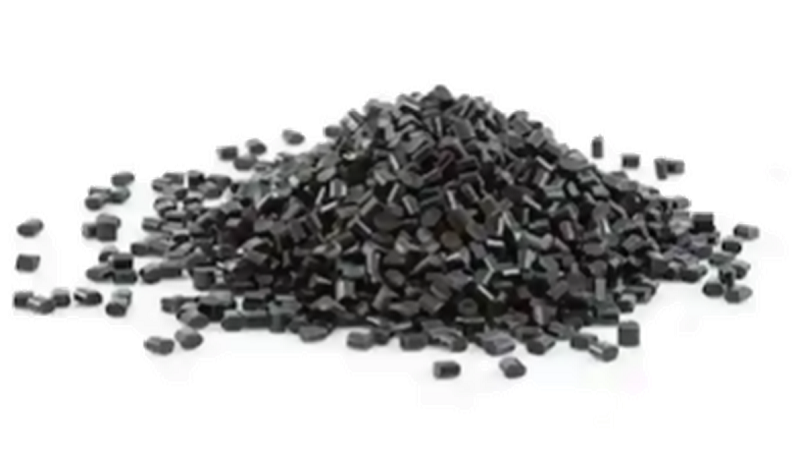
3. Types of plastic
Understanding the basic differences between plastics and their classes is the first step to choosing the right material. Here we will look at the overall differences.
Thermosetting plastics vs Thermoplastics
Thermoplastics once molded, can be reheated and softened again (even into liquid). It’s like melting an ice cube. The polymer molecular structure remains the same throughout the entire processing operation. Thermosetting plastics however undergo a chemical reaction in the molding process. This changes the molecular structure of the material and causes the material to ‘set’ in shape. These plastics cannot be reheated and softened again. They are generally very resistant to heat, however excessive heating would usually cause them to burn up.
Thermosetting plastics vs Thermoplastics general properties of each
Thermoset plastic
- Generally very dimensionally stable
- Resistance to heat
- Can have thicker and thinner wall sections together
- Cannot be recycled
Thermoplastic
- Less resistant to heat
- Chemical resistance
- Harder or softer rubbery surface finishes
- Can be recycled
Semi-crystalline plastics vs Amorphous plastics
Within the thermoplastic range of materials, there are two main types. Semi crystalline polymers and Amorphous polymers. The difference is between the way the polymers molecular chains are arranged when the resin is processed.
Amorphous

These polymers have their molecular structure all tangled up like spaghetti. When they heat to melting temperature, the polymer chains begin to loosen until they flow freely. When the resin cools and solidifies, they simply freeze in place. The tangled structure is not as tightly packed, which can allow light to pass through. These polymers can therefore be transparent.
Semi Crystalline

These polymers have a similar structure to Amorphous, however in certain areas the chains are arranged into tight orderly packets known as ‘crystalline’ regions. As the polymer heats up, at a certain point the crystalline regions unravel and the structure becomes similar to the Amorphous type. As the resin cools, the semi crystalline areas begin to form again. The crystalline areas are tightly packed, which is why these resins tend to shrink more than Amorphous plastics and be opaque in appearance.
Additives
There are many different additives that can be mixed into a resin, in order to give it the desired properties. Below is an example of some commonly used additives:
- 1) UV stability (for products that will be exposed to the sun)
- 2) Plasticizers (these will increase the flexibility of plastic)
- 3) Glass fiber (this increases rigidity and strength)
- 4) Mineral fillers (calcium carbonate for example, that can improve heat resistance)
- 5) Antifungal/microbial
- 6) Fire retardant
- 7) Colouring agents
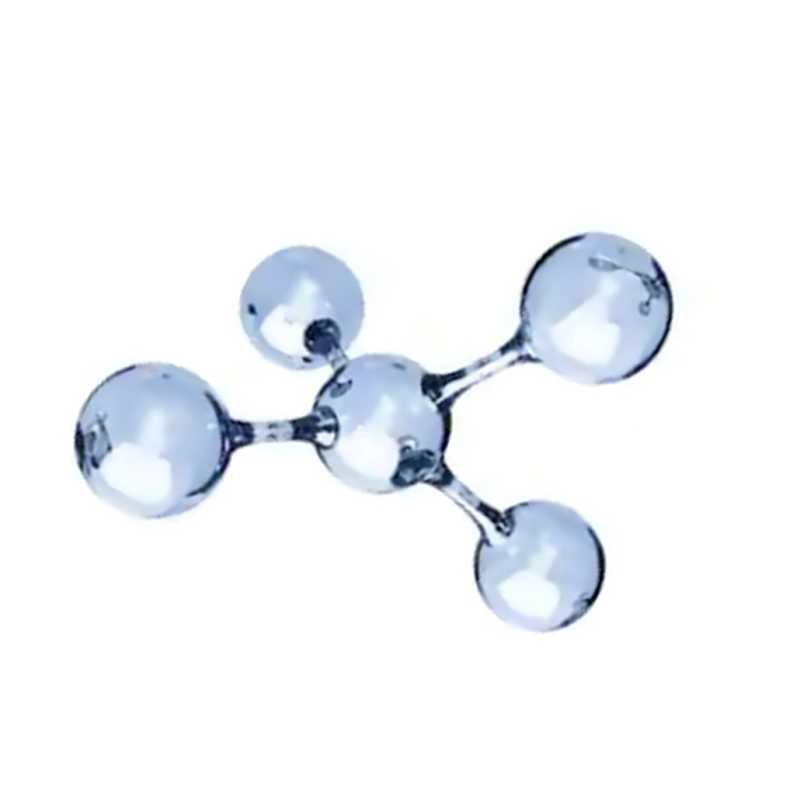
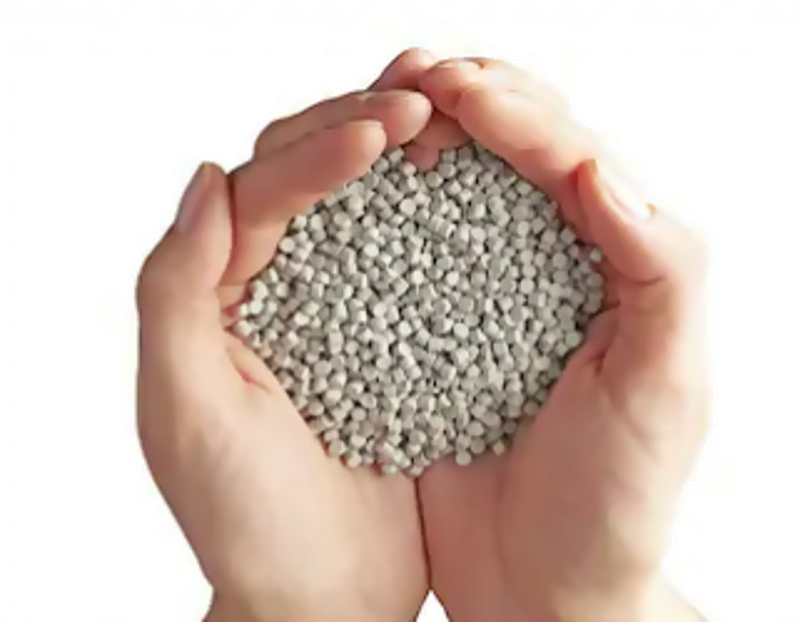
4. Plastic Injection Molding Material Cost
Plastic injection material cost plays an important role when it comes to manufacturing a plastic injection molded product, however, your decision should base on the product application rather than cost alone. Here we list a brief outline of cost comparison between the most common plastics used for injection molding.

5. Plastic Injection Molding Material Weight
The density of a plastic polymer will determine how heavy or light the end product turns out to be. Here we list a brief outline of weight comparison between the most common plastics used for injection molding.
5. Plastic Injection Molding Material Flexibility
It is necessary to know the difference between the material being soft versus being flexible. A material’s stiffness is the material has the ability to resist bending under stress. Here we list a brief outline of flexibility comparison between the most common plastics used for injection molding.
6. Plastic Injection Molding Material Hardness
We need to pick the right material for the right product application, the plastic molding material’s hardness is one of the factors you need to take into consideration. Here we list a brief outline of hardness comparison between the most common plastics used for injection molding.
7. Commodity, Engineering, or High Performance?
Different grades of resins can be grouped according to their uses.

Commodity Plastics is simple and abundant, due to their constant use in everyday items such as packaging. Commodity Plastics are inexpensive and generally have basic performance compared to more expensive grades. Polystyrene would be an example, it is used widely in product packaging.
High-performance Plastics is the top tier of resins and are chosen for applications requiring top performance. These resins are expensive. Polysulfone would be a good example. This material has great dimensional stability and resistance to heat deflection.
Engineering plastics have enhanced performance, and are commonly used in all manner of general mechanical applications. Nylon or acetal, for example, are two commonly used in either injection molded parts, or they can be cast as large slabs and used in machine shops to create parts for production jigs for example. Polycarbonate(PC) and ABS would be another couple of examples of commonly used engineering plastics. PC has great optical properties and ABS good impact resistance.
8. Conclusion
All materials have their own properties, we need to select the plastic injection molding material according to its overall defining characteristics. If your demanded material is not on the page, please tell us your requirements for the plastic part, we will try our best to give you the suitable material.





